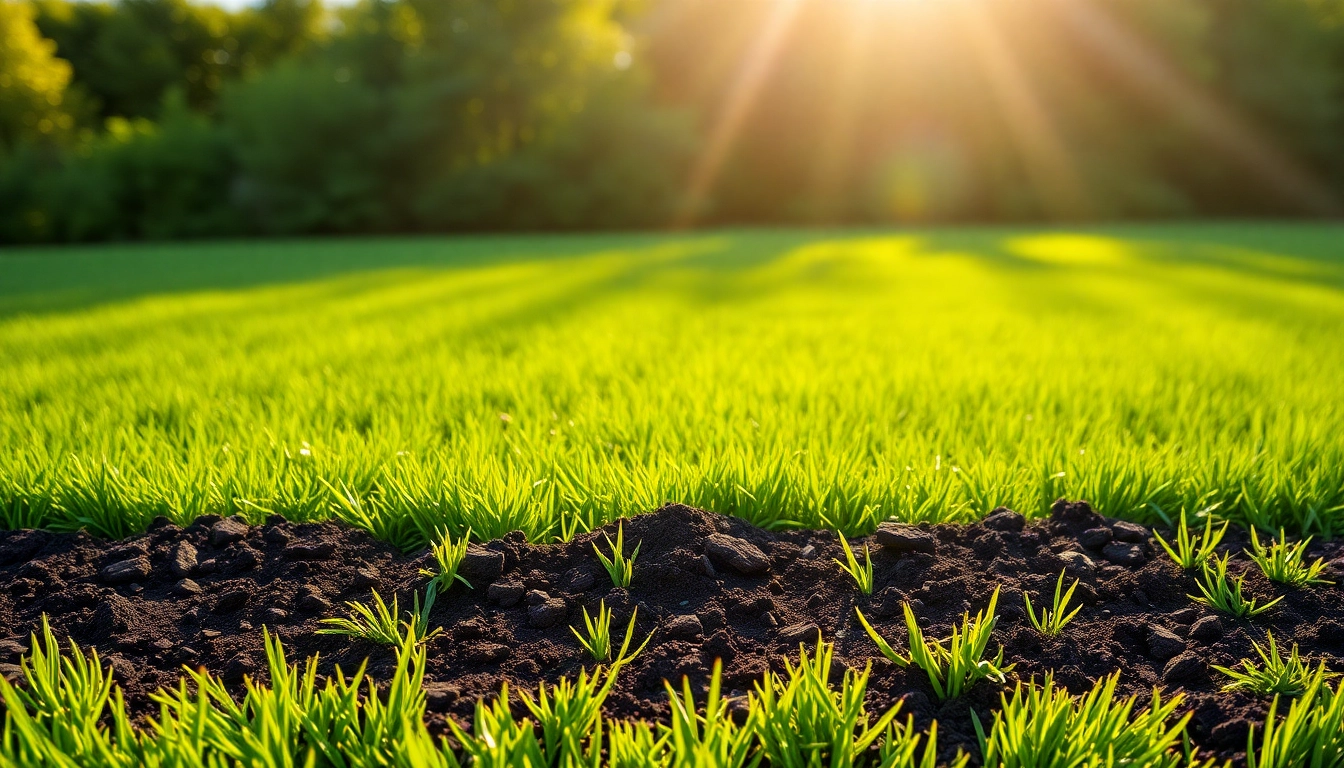Understanding Lawn Top Dressing and Its Benefits
Lawn top dressing is an essential lawn care practice that involves the application of a thin layer of organic material on the surface of your lawn. This process not only improves the overall health of the grass but also enhances the quality of the soil beneath, promoting vigorous growth and a lush, green appearance. Whether you’re looking to rejuvenate an aging lawn or support a newly seeded area, understanding the lawn top dressing process can significantly impact your lawn’s performance.
What is Lawn Top Dressing?
Lawn top dressing is the act of spreading a mixture of soil amendments, compost, and fertilizers across your lawn. Typically, this mix consists of nutrient-rich organic materials that can improve soil structure, enhance drainage, and promote healthy grass growth. Top dressing is usually applied in a thin layer, generally ranging from ¼ to ½ inch, depending on the condition of the lawn and the specific needs of its soil.
Benefits of Regular Lawn Top Dressing
Regular lawn top dressing offers numerous benefits for your grass and landscape, including:
- Improved Soil Quality: Top dressing provides essential nutrients that can enhance soil fertility, leading to healthier plants.
- Enhanced Drainage: A proper top dressing mix can help alleviate soil compaction, allowing for better water absorption and root growth.
- Reduction of Weeds: A thick layer of top dressing can hinder weed growth due to the smothering of weed seeds.
- Healthy Grass Growth: Top dressing encourages strong, lush grass that can better withstand environmental stresses.
- Leveling Uneven Areas: By applying top dressing to low spots, you can create a more uniform surface that helps with irrigation and appearance.
When to Consider Lawn Top Dressing
Timing is crucial for effective lawn top dressing. The best periods to apply top dressing include:
- Early Spring: A perfect time to prepare your lawn for the growing season.
- After Aeration: Following aeration allows for better penetration of the top dressing material into the soil.
- Post-Overseeding: Applying top dressing after overseeding can help protect seeds and improve germination rates.
- Seasonal Maintenance: Regular top dressing throughout the growing season can continuously enhance soil health and lawn appearance.
Essential Materials for Lawn Top Dressing
Choosing the Right Soil Mixture
One of the most critical aspects of lawn top dressing is selecting the right soil mixture. A successful top dressing blend typically consists of:
- Sandy Loam: This type of soil provides excellent drainage and aeration.
- Compost: A key ingredient that adds nutrients and improves microbial activity in the soil.
- Sharp Sand: Helps with leveling and drainage, making it ideal for hilly terrains.
A common formula for a top dressing mixture is three parts sharp sand, six parts high-quality sandy loam, and one part compost. This combination can vary based on specific lawn needs and soil conditions.
Compost vs. Sand: Which is Better for Lawn Top Dressing?
In the debate of compost versus sand for top dressing, each material has its merits:
- Compost: Offers the best nutrient profile and aids in building soil structure. It improves the organic matter content, leading to healthier soil.
- Sand: Primarily used for leveling purposes and enhancing drainage. It’s less nutrient-dense but crucial for certain soil types that require better aeration.
Ultimately, a mix of both may yield the best results, especially if your lawn has specific drainage issues or nutrient deficiencies.
Where to Purchase Lawn Top Dressing Materials
Top dressing materials can be sourced from a variety of places:
- Local Garden Centers: These typically carry pre-made mixes and raw components such as sand and compost.
- Landscape Supply Stores: Offer bulk options and custom blends tailored to specific lawn care needs.
- Online Retailers: Can provide convenient access to specialized soils and composts, often with delivery options.
Always verify the quality of materials, asking for testing results when possible, to ensure optimal results for your lawn.
Step-by-Step Guide to Lawn Top Dressing
Preparing Your Lawn for Top Dressing
Before applying top dressing, preparation is key. Here’s how to get your lawn ready:
- Mow the Lawn: Cut grass to a height of about 2-3 inches to allow the top dressing to make good contact with the soil.
- Aerate the Soil: Use a core aerator to create holes in the soil, promoting better penetration of nutrients and moisture.
- Remove Debris: Clear away any leaves, sticks, or other organic matter that might impede even application.
How to Apply Lawn Top Dressing Effectively
Applying the top dressing properly will enhance its effectiveness. Follow these steps:
- Spread Evenly: Use a shovel, rake, or a top dressing spreader to distribute the material evenly across the lawn, aiming for a layer approximately ¼ inch thick.
- Work into the Soil: Raking or lightly dragging a broom can help further incorporate the top dressing into the grass.
- Water Thoroughly: After application, water the area to help settle the material and enhance nutrient absorption.
Post-Application Care for Your Lawn
After top dressing, maintaining proper care ensures the material works effectively:
- Regular Watering: Continue a consistent watering schedule to keep the soil moist.
- Avoid Heavy Traffic: Minimize foot traffic across the treated area until the grass has recovered and established.
- Monitor for Grass Recovery: Keep an eye on the growth and health of your grass in the weeks following application.
Common Mistakes to Avoid in Lawn Top Dressing
Over-Dressing and Its Consequences
One of the most common mistakes is over-dressing, which can lead to suffocating the grass and inhibiting its growth. Ensure that you apply only a thin layer and monitor your lawn’s response.
Ignoring Soil Quality Considerations
Ignoring the existing soil quality before top dressing can diminish the benefits. Always perform a soil test to understand its composition and fertility, adapting your top dressing mix accordingly.
Timing Your Lawn Top Dressing Incorrectly
Applying top dressing at the wrong time can adversely affect your lawn’s health. Avoid top dressing during its dormant phase in winter and aim for the growing season for best results.
Advanced Techniques for Lawn Top Dressing
Using a Top Dressing Spreader for Even Coverage
For larger areas, consider using a top dressing spreader. This tool can help achieve an even application, reducing the labor intensity of the task while ensuring uniform coverage.
Combining Lawn Top Dressing with Overseeding
Combining top dressing with overseeding can enhance germination rates and reduce competition from weeds. Spread the top dressing first and then apply your seeds for optimal results.
Measuring Results: When to Evaluate Lawn Top Dressing Outcomes
Evaluate the effects of top dressing after about six to eight weeks. Look for signs of improved grass health, including density, greener color, and enhanced drought resistance. Adjust your top dressing approach as needed for future applications based on these observations.



